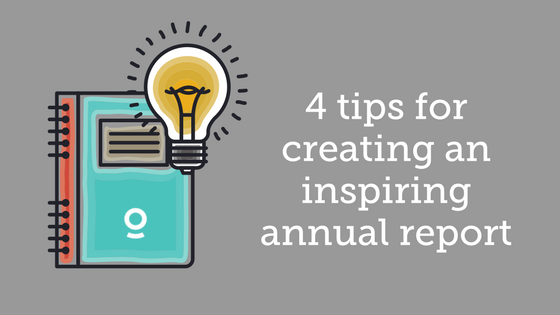Little Green Light is a cloud-based donor management system for fundraisers.
Subscribe to get our latest product updates, best practices and tips to grow your nonprofit.

Annual reports are a useful tool for donor stewardship and marketing, but they can be a ton of work to put together. In addition, the end product may strike your donors as lengthy and dull—the exact opposite of the reaction you want them to have! With that in mind, here are four tips to help you create an annual report that is informative and inspiring.
1. Include success stories
Donors want to understand the impact of their contributions. They’re also busy and may not have a lot of time to read your annual report. Make it easy for them to feel good about supporting your organization by including success stories from the year. Whenever possible, include a photo with the success story and keep the story brief.
Here’s an example:
Lyman, an 86-year-old veteran, used to struggle to take care of household chores like cleaning the gutters and shoveling his walkway. He worried he couldn’t manage everything alone, but he wasn’t ready to give up his independence. Ever since Lyman was matched with Jack, one of our visiting angels, he spends less time worrying and more time doing what he loves: playing checkers with his grandkids.
2. Make it visual
Don’t limit your use of images to only success stories, though. Whenever possible, show don’t tell. Infographics are a great way to inform your donors in a more engaging way than a text-heavy annual report would. Consider using infographics to:
You can use an online tool such as Canva to create infographics that will wow your donors. Take a look at this example from Oxfam—rather than telling the story in a lengthy, written message from their executive director, they put together a compelling infographic:

3. Keep the language donor-centered
An annual report shares the financial status and the accomplishments of your organization. But there’d be nothing to share if it weren’t for your supporters. Rather than pat your organization on the back (even though you truly deserve it!), give your donors credit and connect them to the impact of their financial support. Use donor-centered language to help them feel appreciated and inspired.
For example, instead of saying, Over the past year, the Community Food Bank served 8,231 meals to seniors at our soup kitchen…
…try this: Your support fed 8,231 nourishing meals to grateful seniors this year.
4. Have a system in place to track donations
Without data, your annual report won’t be an effective communication tool. Plan ahead and communicate with other staff members so you understand what data you’ll need to produce. Use a donor management system like Little Green Light to track donations in a way that allows you to easily report on the data you want to share in your annual report.
Conclusion
Many nonprofits create annual reports to provide financial transparency to their donors, thank supporters, and share the impact of the organization’s work over the past year. It’s an opportunity to inform donors and share the results of your labor. By creating a donor-centric report that’s full of success stories and images, your donors are more likely to feel engaged with your organization and, as a result, more inspired to give again.
Ready to try LGL? Get your first 30 days free. No credit card required.